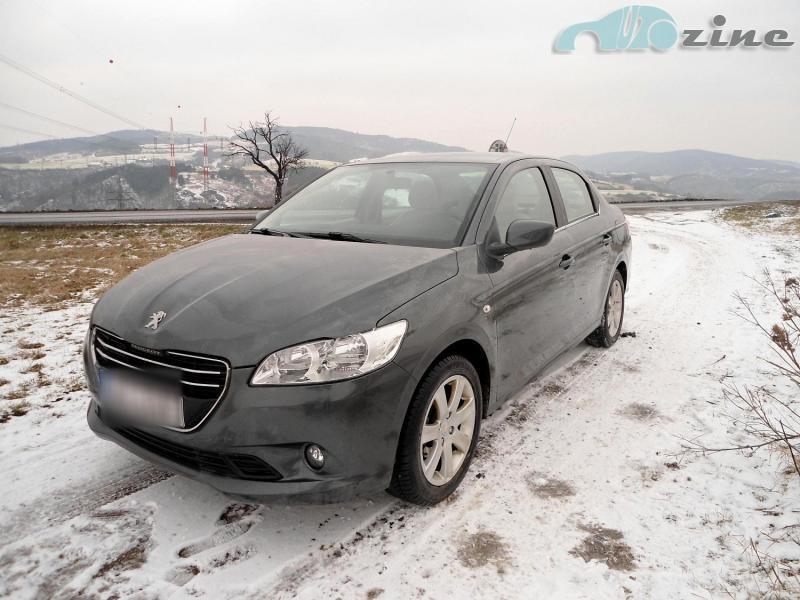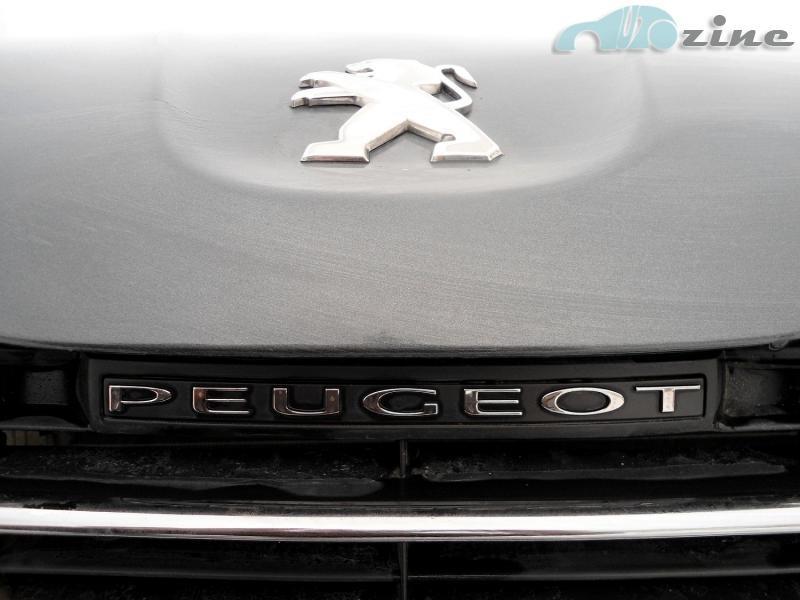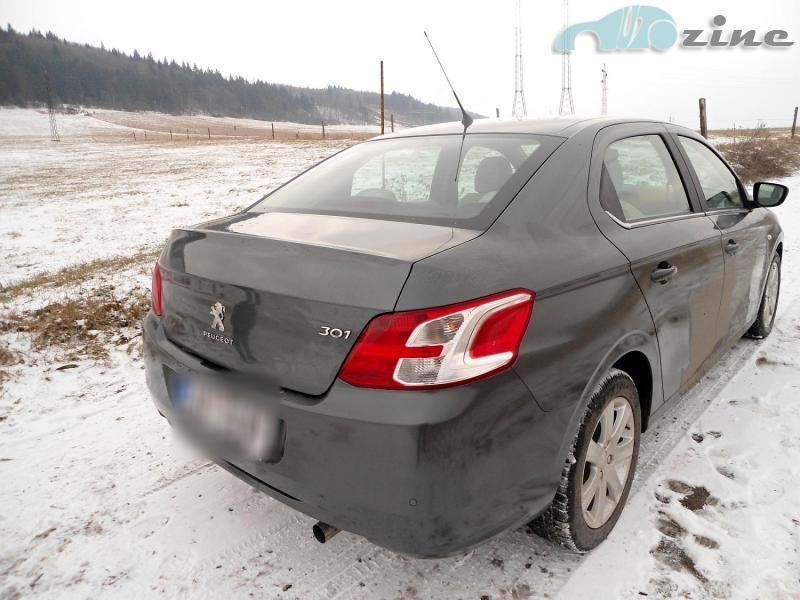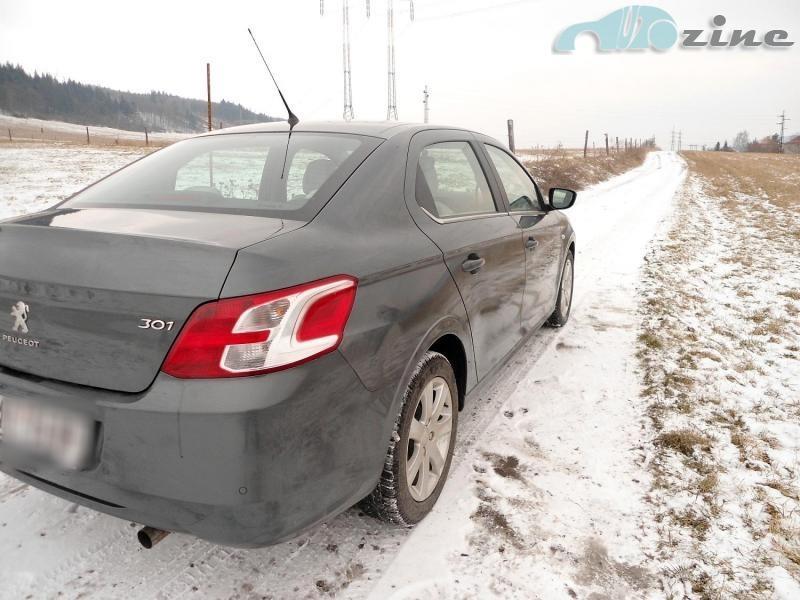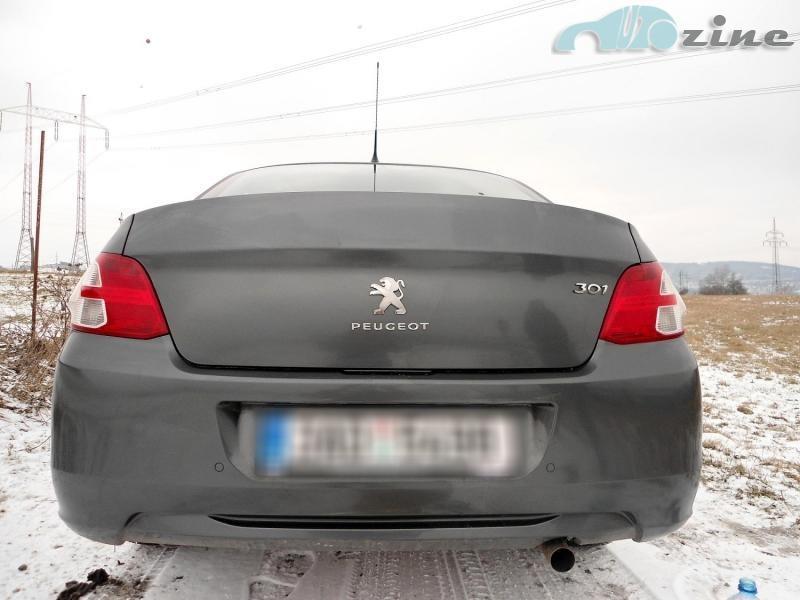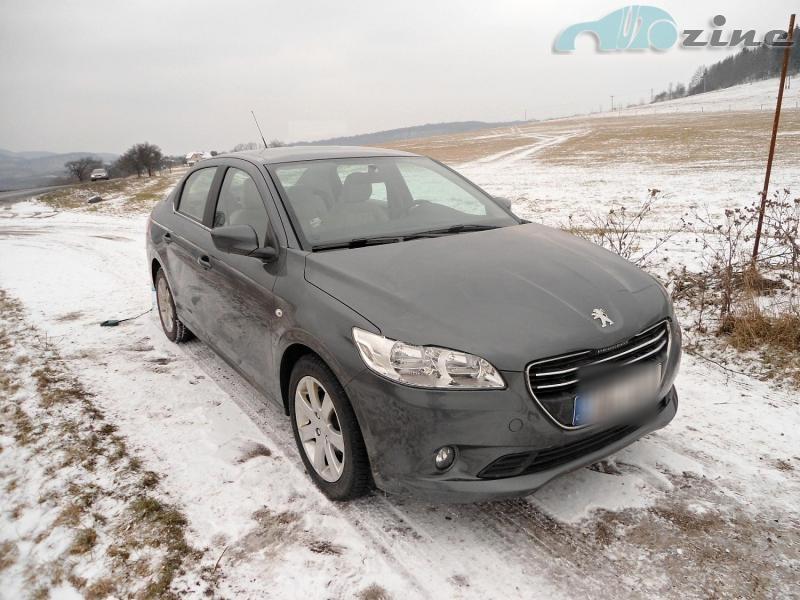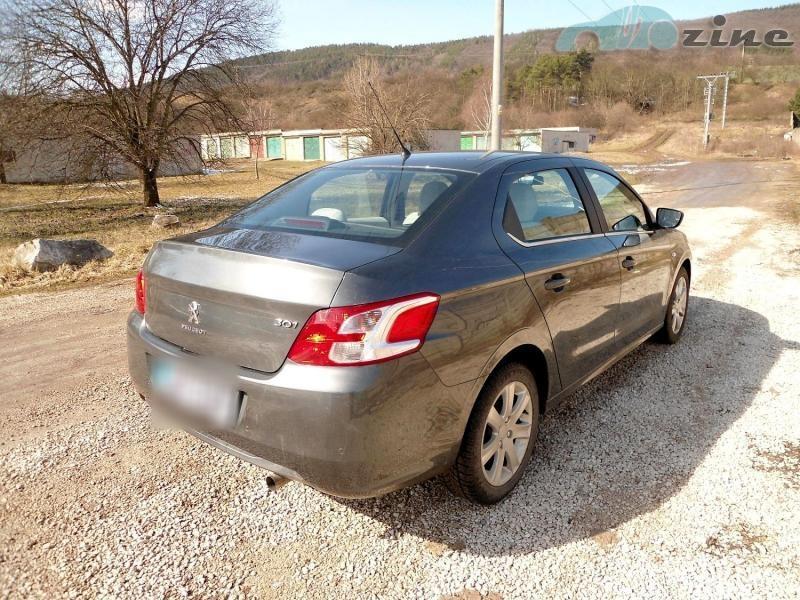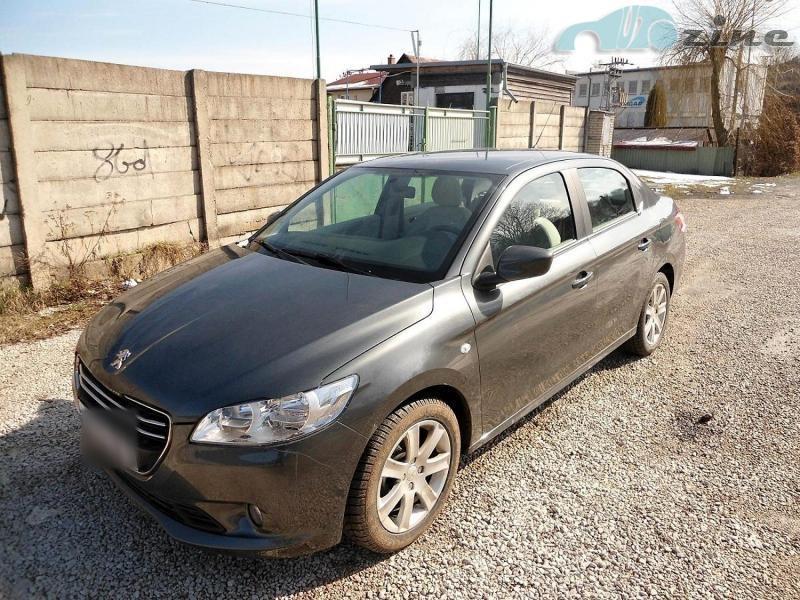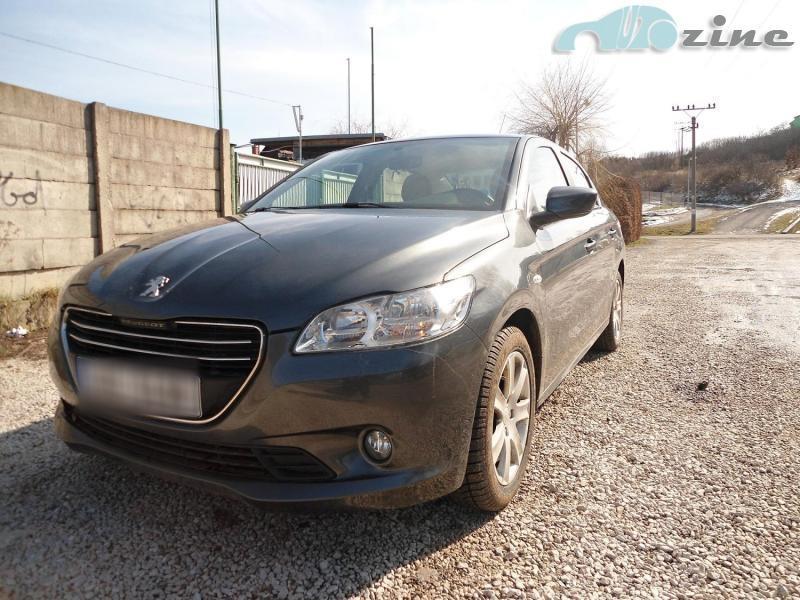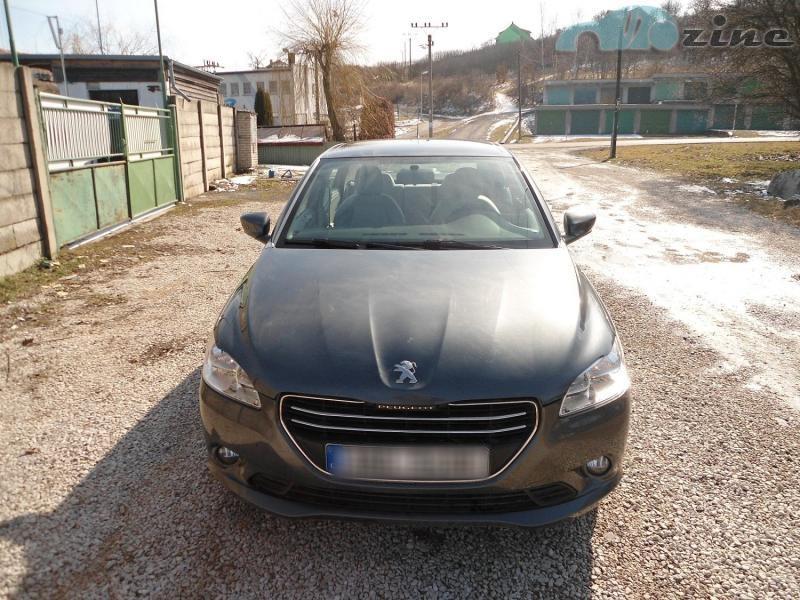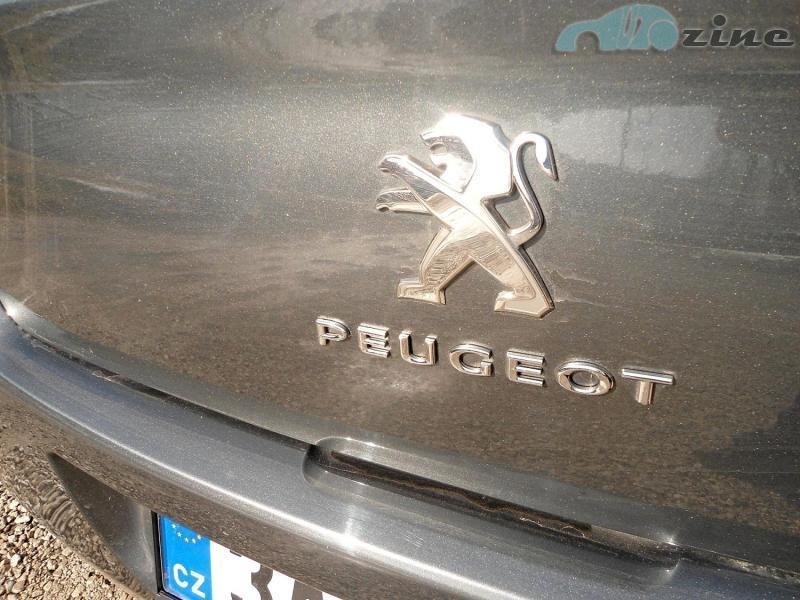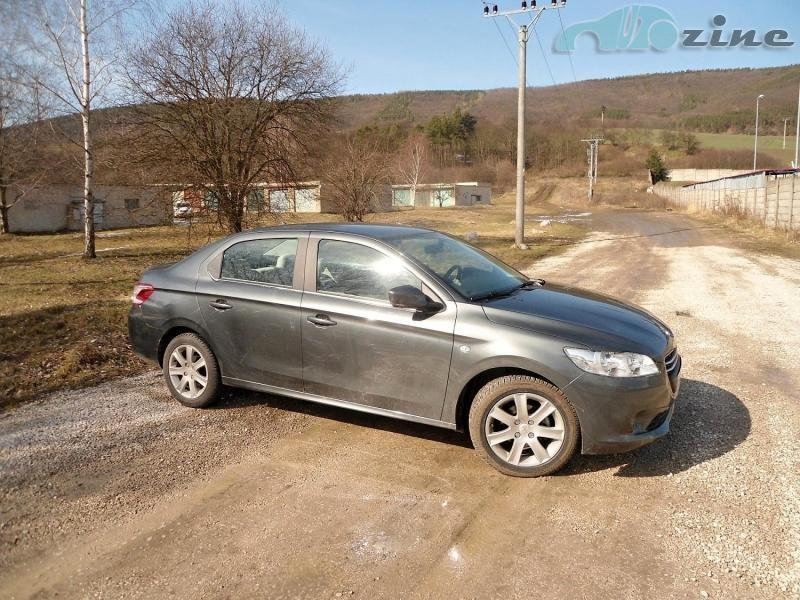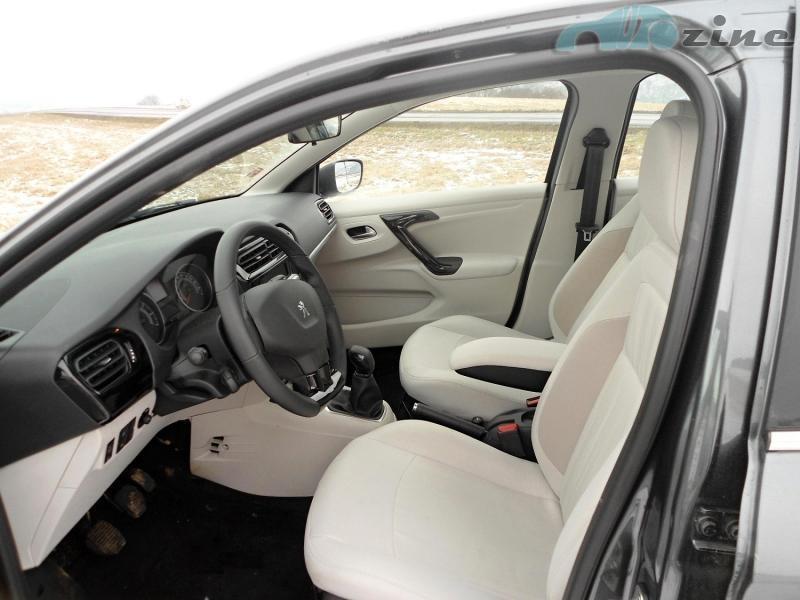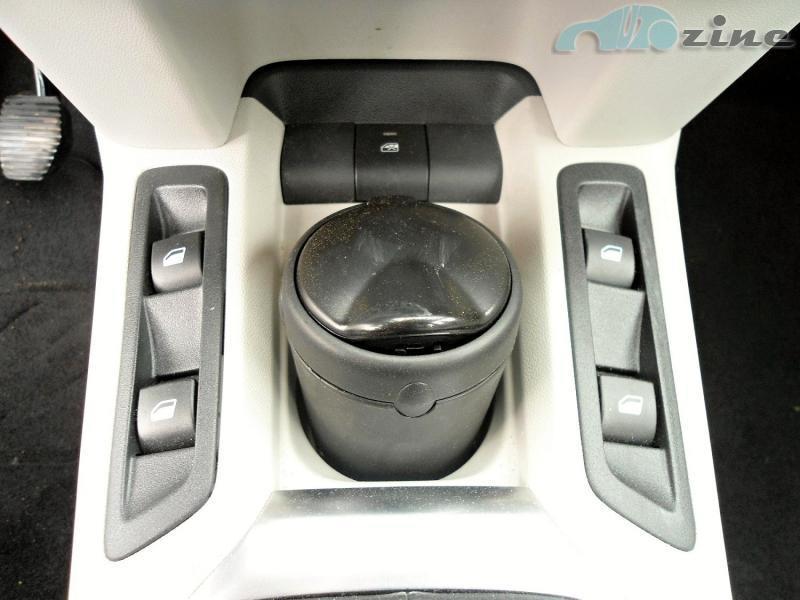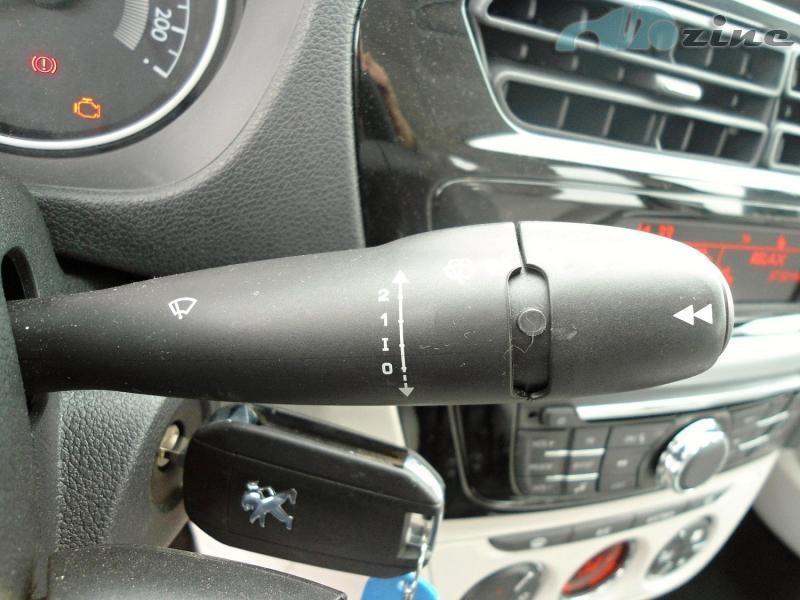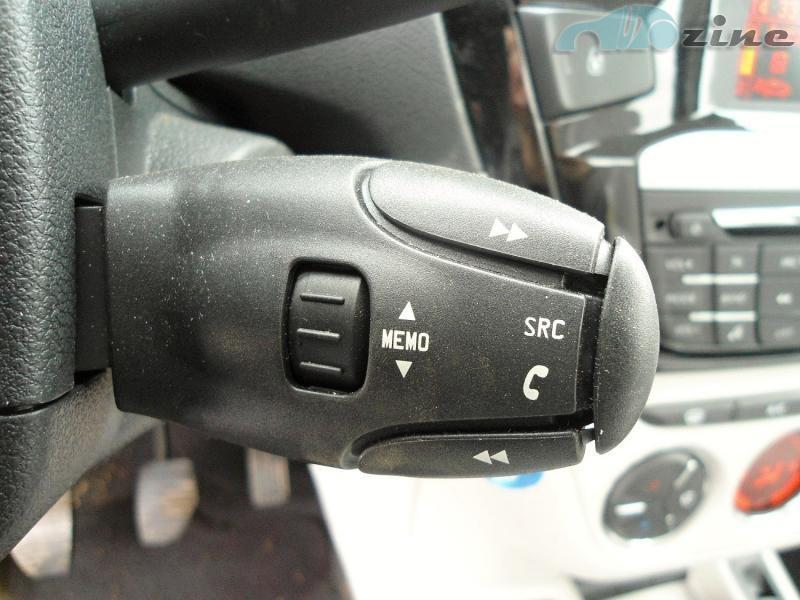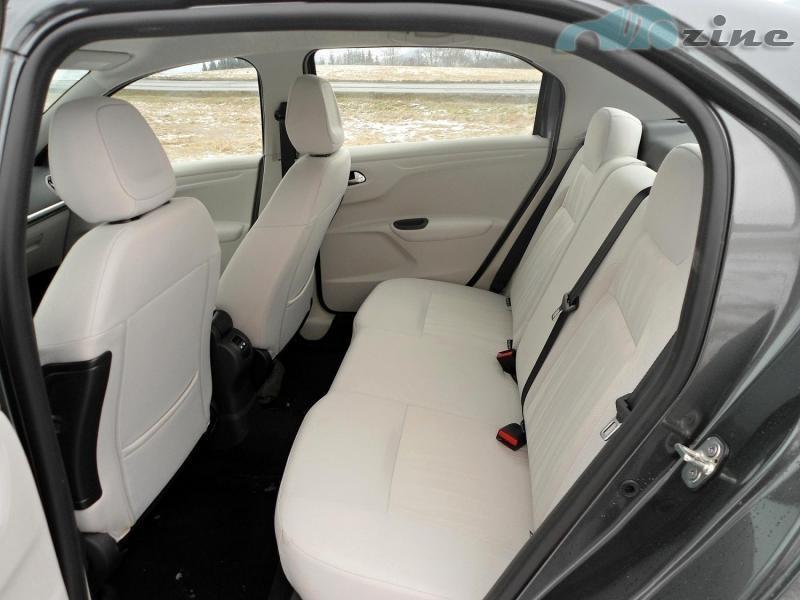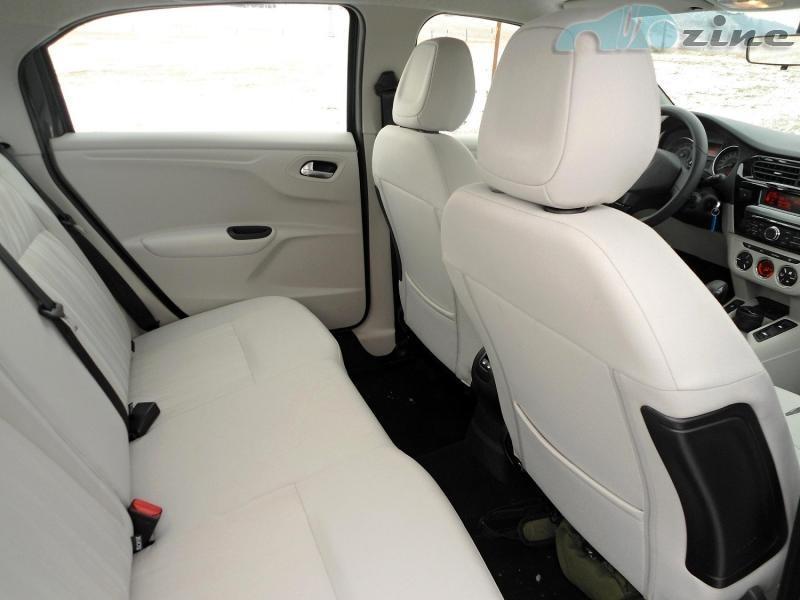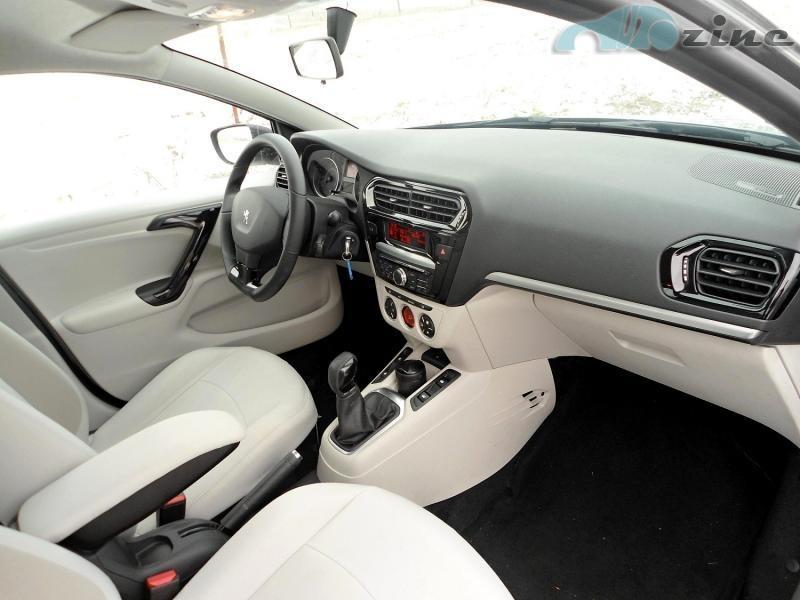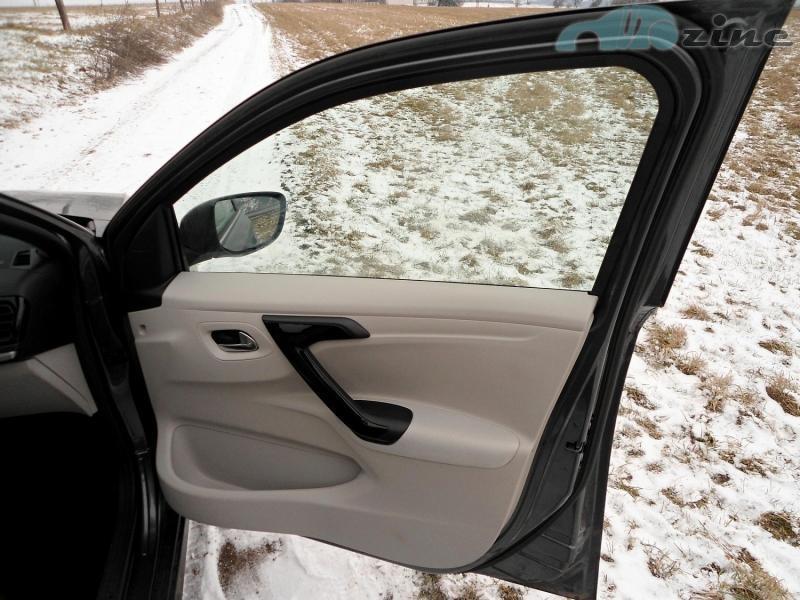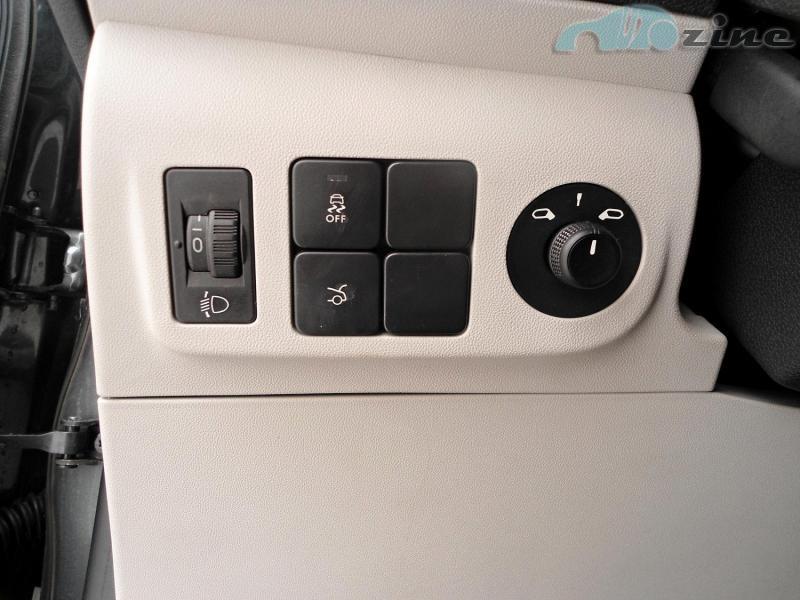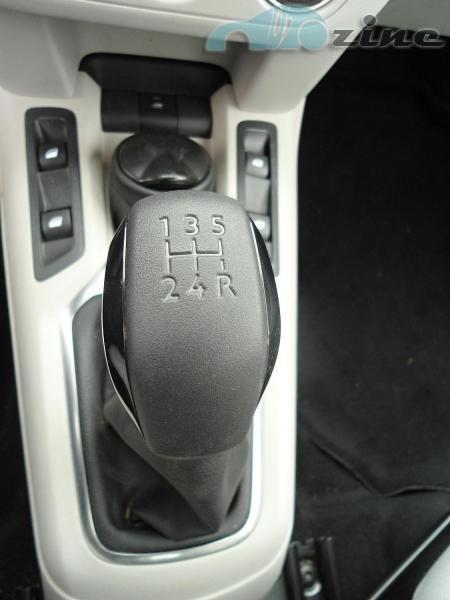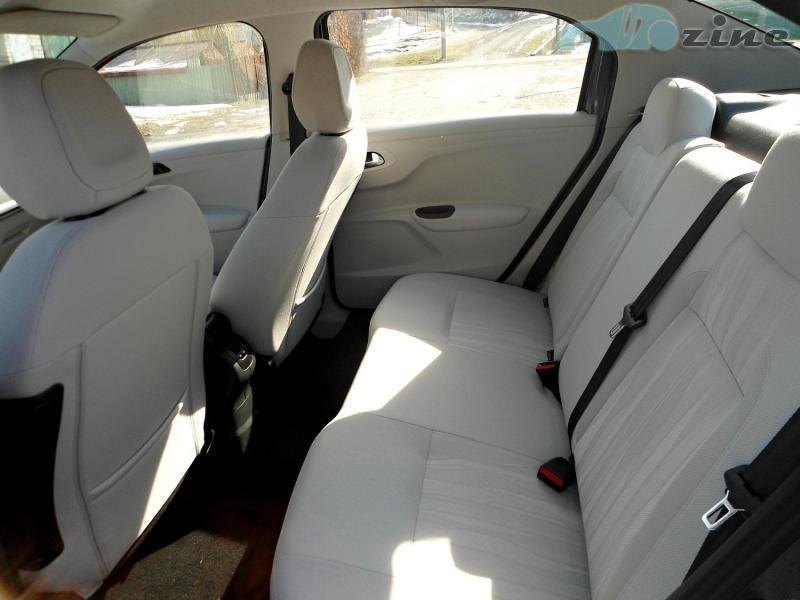The present time is full of economic crisis, which requires various austerity measures in all possible places. Unfortunately, this is also reflected in the new car market. A large part of those interested in a car do not have enough funds to buy it, and along with that, it is very difficult to choose one that could meet the exact expectations. That is why the French car manufacturer Peugeot has developed a cheap sedan with the designation 301, which has the task of competing with the Czech bomb in the form of the Skoda Rapid . The car came to our editorial office in the Allure trim level and fitted with a 1.6 liter diesel engine.
Exterior
Compared to the Citroën C-Elyssé , its twin, the 301 features simpler details, but it still lacks a certain amount of elegance. The car was designed for poorly maintained and unpaved roads, so its clearance is slightly higher than the competition.

At first glance, I was particularly interested in the front radiator grille with a silver frame, in which a discreet Peugeot inscription is incorporated in the upper part. The hood is characterized by a discreet molding, in which the typical logo of the manufacturer is located. The front headlights stand out with a pleasant smiling appearance and extend all the way to the sides of the car.
The rear part of the 301 attracts attention thanks to the large headlights, which, despite the absence of LEDs, have quite decent brightness. Even a layman will recognize the voluminous luggage compartment from the local size. In a design comparison with the domestic Skoda Rapid, in my opinion, the Peugeot 301 is more successful.
Interior and equipment
Our version had the top-of-the-line Allure trim . There was a fairly significant amount of luxury details and also light upholstery, which is very prone to catching dirt. Personally, I would prefer a dark shade. After sitting behind the excellent three-spoke steering wheel with a flattened lower part, I literally sunk into the soft seat with good lateral guidance. It reminded me of old well-known French cars from the 90s of the last century, which were characterized by too soft seats. On the other hand, I have to admit that despite the impossibility of longitudinal adjustment of the steering wheel, I found the ideal driving position almost immediately. Long highway journeys were not a problem, which was also helped by the excellent 1.6 HDI engine .
The interior of the car is designed in a simple way, there are no complex curves. Everything is clearly arranged. You can see accessories made of glossy black plastic on the lower arm of the steering wheel, the framing of the center panel, around the air conditioning vents or the door handles. A central display showing the current range, fuel consumption and other optional data has found a place on the center panel. Below it is the radio control and also the manual climate control display. Relatively impractical is the electric control of lowering all the windows, which for some unknown reason is located in front of the gear lever.
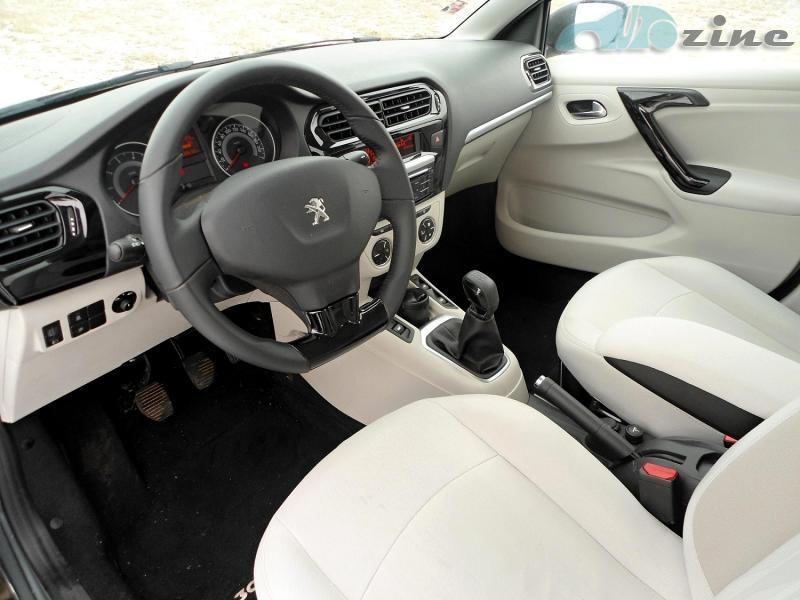
In terms of equipment, the Peugeot 301 is a bit worse off than the Skoda Rapid, because despite the top grade Allure, it only offers four airbags instead of the usual six. There are ABS and ESP systems, electrically adjustable rear-view mirrors and air conditioning. On the other hand, there are several features missing here, the presence of which I would really welcome. These include lighting in the sun visors, a rain sensor or xenon headlights.
In terms of space for the crew, the Peugeot 301 is literally miracles. Front passengers have plenty of legroom, with my height of 182cm I still had 6cm of headroom. 301 deserves credit for that! In the back, passengers will feel almost like they are in the Octavia II, because there is really enough room for the knees. There is significantly less headroom here. I would recommend people taller than 185 cm to travel in the front seats.
In the back seats, I was literally taken aback by the headrests, or rather just a hint of them. This cheap solution does not bode well in the event of a rear-end collision. Furthermore, I will not leave a reminder about the luggage compartment, which although abounds with an excellent double bottom and a volume of 640 liters , but I really did not understand its lid. Literally just a piece of sheet metal without any internal insulation and what's more, gas struts are missing. As a result of insufficient securing of the lid in the open position, I have been blessed with a blow to the neck or head countless times.
Engine and ride
The tested Peugeot 301 was equipped with an economical 1.6 HDI engine with a power of 68 kW, which cooperates with a direct-shift five-speed gearbox. This motorization can give a car weighing 1195 kilograms a good workout in the city and at the same time it is excellent for long highway journeys. At a speed of 130 km/h, the engine turns at a pleasant 2800 rpm and consumption is 5.6 l/100 km . It is a great pity that there is no 6th gear, which would reduce the resulting consumption on the highway even more. When driving around the city, the engine begins to show itself from 1800 rpm, when it gains power, and slows down at 4000 rpm. Combined fuel consumption settled at a fairly acceptable 5.9L/100km over the course of testing, despite the fact that I alternated between very economical driving and brisk highway pace. The car's gearbox is accurate by French standards. The developers have taken care here and the tracks are pleasantly long.
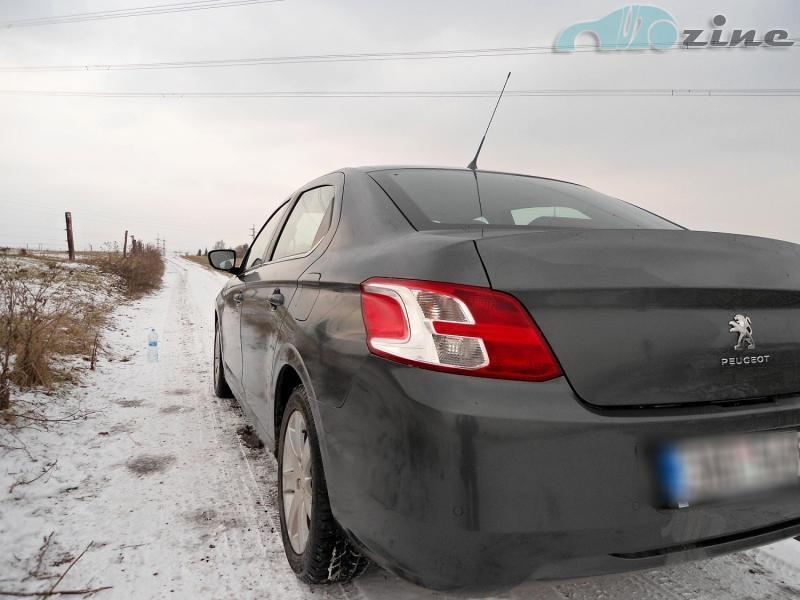
The driving comfort is practically impossible to fault. This model is built to operate on poorly maintained roads, so it fits us perfectly. The electric power steering has a variable effect depending on the speed of the car, which the driver will especially appreciate during urban maneuvers and parking. The chassis is pleasantly stiff, it irons out potholes on the road fairly well, and you won't hear any shocks from the wheels, with few exceptions. However, it also has its limits. Especially in sharp, long corners, the car leans quite a bit at higher speeds, and the ESP system, which is equipped with even the most basic version, must prevent it from going off the road. Therefore, it is better to ride the 301 less aggressively. After all, this is a car suitable for novice drivers or young families and is definitely not designed for road racing. With regard to price savings, sound insulation was visibly saved. All you have to do is drive the 301 on a slightly rougher surface and communication in the cabin is suddenly more complicated.
Conclusion
Peugeot has managed to create a pleasant-looking car that can, under certain circumstances, be on par with the new Skoda Rapid in terms of its price tag and driving performance. For very decent money, you get an economical and well-equipped family car, which was designed from the beginning for operation in difficult conditions.
Thanks to cost-saving measures, you will come across minor shortcomings here and there. In the end, however, I would only criticize the insufficient noise insulation, the hard-to-reach electric window buttons and the trunk lid without gas struts. However, due to the very low base price, even these things can be successfully overlooked.
Price of a specific car: 340 000 CZK
Pros:
– appearance
– comfort
– inner space
– economical engine
– favorable price
Cons:
– insufficient noise insulation
– missing trunk lid gas struts
– windows download buttons



